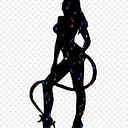A stroke occurs when a blood vessel in the human brain ruptures and bleeds, or when there is a blockage in the blood supply to the brain. A rupture or blockage prevents blood and oxygen from reaching the brain tissue.
According to the Centers for Disease Control and Prevention (CDC), stroke is the main cause of death in the United States. Every year, more than 795,000 Americans experience a stroke.
It is very important that proper blood and oxygen flow is returned to the brain as soon as possible. Without oxygen and essential nutrients, the affected brain cells are damaged or die within minutes. After brain cells die, they generally don’t regenerate and devastating damage can occur, sometimes resulting in physical, cognitive and mental disabilities.
Stroke Symptoms.
The range and severity of the initial symptoms of a stroke vary widely, but they do have the general characteristic of being sudden. Warning signs may include some or all of the following:
- Dizziness, nausea, or vomiting
- Very severe headache
- Confusion, disorientation, or loss of memory
- Numbness, weakness in an arm, leg or face, especially on one side
- Abnormal speech or slurred
- Difficulty with comprehension
- Vision loss or difficulty seeing
- Loss of balance, coordination or the ability to walk
Is a stroke curable? The short answer is yes, strokes are curable — but they happen in two stages. First, the doctor prescribes specific medication to restore normal blood flow in the brain. Then, patients participate in rehabilitation to cure the secondary effects.
Although it is impossible to restore damaged brain tissue, rehabilitation teaches healthy parts of the brain how to compensate for the damaged areas. You will learn how this process works, and how to heal math after a stroke.
Strokes are considered “brain attacks.” It occurs when the blood supply to the brain is interrupted by blocked arteries (ischemic stroke) or ruptured arteries (hemorrhagic stroke).
In order to cure an ischemic stroke, doctors must dissolve the blood clot either through medication or surgery. Common drugs used to treat ischemic stroke include tPA or aspirin, which help thin the blood and dissolve clots in the brain.
When medication cannot be used, your doctor may need to manually remove the clot through surgery. However, instead of opening the skull, doctors can often pass through arteries in the legs to reach the clot in the brain (a type of surgery called mechanical embolectomy).
Hemorrhagic strokes often require an invasive type of surgery to repair burst blood vessels in the brain. Usually, a portion of the skull is removed so the doctor can access the ruptured artery (a type of surgery called a craniotomy). Invasive surgery carries a higher risk but is often required to stop hemorrhagic strokes.
Until the stroke is treated, the damage sustained by the lack of blood flow continues to worsen. After the stroke has healed, the person’s life has been saved and the road to recovery awaits.
